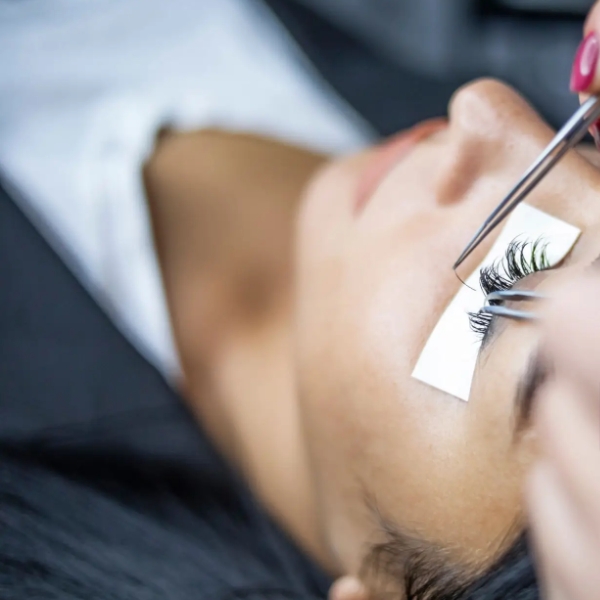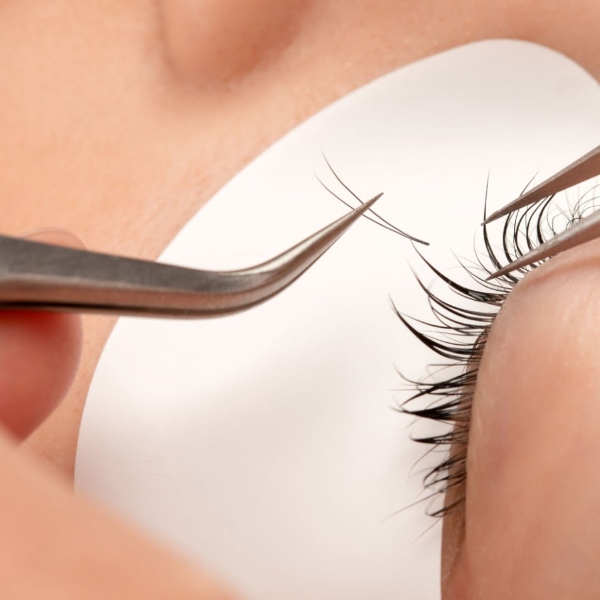When it comes to adding length and volume to one’s own hair, one of the common options available is to use hair extensions. Nevertheless, despite the fact that they are capable of making the hair appear to be thicker, they can really do damage to the hair in the process. It does not matter whether they are clip-in extensions or something a little bit more long-term, such as micro-ring extensions; they still represent a risk to the natural lashes, hair and scalp.
One of the many things that can lead to alopecia, also known as hair loss, is pulling on the hair excessively and frequently for a protracted length of time. Traction alopecia is the name given to this particular form of hair loss.
As a result of wearing hair extensions, we have seen a continuous increase in the number of patients presenting with traction alopecia over the course of the previous several years. The majority of these patients are women. A condition known as traction alopecia is a kind of hair loss that can be induced by repeatedly pulling on the hair in the same region. Traction alopecia is a condition that is caused by a number of factors, including the usage of hair extensions and the wearing of hairstyles that pull the hair back tightly.
Traction alopecia is a kind of hair loss that can be brought on by persistent pulling on the hair follicle. This causes the body to launch an attack on its own hair follicles, which in turn makes the re-growth of the hair follicles unpredictable. In many cases, it can result in an overall loss of hair. Although persons of any race and ethnicity are susceptible to developing traction alopecia, African-American women are particularly at risk for the condition.
Age is another factor that can play a role in the development of traction alopecia. Your hair will grow more prone to damage as you get older, which will increase the likelihood that you may get traction alopecia.
Within the realm of eyelash extensions, this ailment would be the result of an excessive amount of pressure being placed on the natural lash follicle as a result of overweighted lash extensions, clients repeatedly pulling at their extensions, and stickies (extensions glued together).
In this article, we will discuss the most effective strategies to avoid traction alopecia as well as the most successful ways to treat traction alopecia. Continue reading to find out more.
- 1 What Exactly Is Traction Alopecia?
- 2 Could It Be Possible To Reverse The Effects Of Traction Alopecia?
- 3 What Does Traction Alopecia Look Like?
- 4 Can Eyelash Extension Lead To Traction Alopecia?
- 5 Is Traction Alopecia Preventable, And If So, How Do You Prevent Traction Alopecia With Eyelash Extensions?
- 6 Is Traction Alopecia Permanent?
- 7 How Can Traction Alopecia Be Treated?
- 8 Home Remedies For Traction Alopecia.
- 9 Risk Factors.
- 10 Conclusion
What Exactly Is Traction Alopecia?
As was discussed up top, traction alopecia is a kind of hair loss that takes place when your hair is tugged on in a recurrent manner. The condition known as traction alopecia (often abbreviated as TA) is a form of hair loss that can be brought on by continuous and repeated pulling on one’s hair and eyelashes. Inflammation of the hair follicle is the root cause of this action. In 1907, it was originally documented in people in Greenland who had experienced hair loss along the hairline as a result of protracted hairstyles such as tight ponytails.
The following are some potential triggers for traction alopecia:
- The burden that comes with having extraordinarily long hair
- Employing the use of hair extensions
- Having your hair styled in dreadlocks, weaves, cornrows, or braids.
- Putting your hair in a bun or a ponytail that is pulled very tight.
- Using rollers or relaxers that include chemicals
Traction folliculitis, often known as soreness and little lumps found around the follicle, can be a warning sign for traction alopecia.
Could It Be Possible To Reverse The Effects Of Traction Alopecia?
When discovered in their early stages, the majority of cases of traction alopecia are reversible by eliminating the source of the traction being applied. If you wait until it has reached the stage where it causes scarring and hair loss, then the therapy may not be beneficial.
During the early stages of folliculitis, the application of steroid creams can help reduce inflammation and prevent scarring from occurring. Traction alopecia can be completely reversed, and new hair growth is possible if it is diagnosed and treated in its early stages. Remember that in order to avoid traction alopecia, it is absolutely necessary to protect your hair by taking the necessary precautions.
Sometimes the hair loss caused by traction can be reversed. However, if the lash hair growth does not return to the area within a few months after ending the cause of the traction or pulling, you may have late-stage TA, which implies that your hair loss may be permanent. If this occurs, you should seek medical attention immediately. But you do have options. One possible line of action to bring back living hair that continues to develop in certain locations is hair transplantation, for instance. The hair follicles are extracted from a donor region somewhere on the body using a technique that is only somewhat invasive.
What Does Traction Alopecia Look Like?
Traction alopecia is not the same as shedding, so be sure you don’t get the two confused. Shedding is absolutely normal. As a natural occurrence and a component of the life cycle of hair, the average person loses between three and four eyelashes per day. Traction alopecia is a completely different kind of condition, as its symptoms may not appear for years.
When it comes to TA, the front lash of your customer is the one that is affected the most, which might result in a patchwork eyelash. However, the impacts of the disorder also depend on the individual’s frequent practice of lash care, which may be related to the individual’s ethnic origin.
As the condition progresses, any or all of the following symptoms may become more prominent:
- Itchiness and a feeling of constriction
- An enlargement at the site of the hair follicle
- An outbreak of follicular pustules may be present (small bumps on the skin that consist of fluid or pus)
- Fragmented strands of hair and bare spots
- An expansion of the hair portion
- Acne that appears on the scalp or at the foundation of braids
- Symptoms include a rash and sores on the scalp
- In areas where the hair has been subjected to strain, there may be areas of thinning or damaged hair.
- A receding hairline around the temples, the nape of the neck, and the forehead
Can Eyelash Extension Lead To Traction Alopecia?
The usage of eyelash extensions on a regular basis can lead to a condition known as traction alopecia, which causes hair loss owing to an excessive amount of stress being imposed on the hair shaft. As a consequence of this, the hair follicle might become damaged, which can cause the rate of hair production to decrease or even come to a complete halt.
Is Traction Alopecia Preventable, And If So, How Do You Prevent Traction Alopecia With Eyelash Extensions?
Traction alopecia is a kind of hair loss that can be avoided and has a well-established root cause, in contrast to the autoimmune condition known as alopecia areata, which causes patchy hair loss. Even though traction alopecia is not caused by a disease, it nonetheless has the potential to result in irreversible hair loss. Adopting particular hair care methods that prevent placing strain on your hair whenever feasible is the most effective strategy to prevent traction alopecia from occurring in the first place.
Always carry out a comprehensive consultation with clients in order to prevent traction alopecia. This provides you with a comprehensive evaluation of the client’s health, as well as the general health, thickness, and length of the client’s natural lashes. The length and weight of the extension that can be applied to their natural lashes will define the length and weight of the extension that can be utilized. This will allow you to customize and create the look that the client wants.
It is imperative that you always follow the 1-1 application procedure when applying for extensions. One classic lash, in addition to one of your own natural lashes. This enables the lash to complete the natural lash growth cycle and shed at its own pace without interference. Maintaining the extensions on a regular basis enables the technician to do a comprehensive examination of the client’s natural lashes before beginning the infill process. Pay attention to symptoms that could point to being overweight, and make adjustments by employing a more precise extension.
Before applying eyelash extensions to a customer, it is essential to conduct a thorough examination of their natural lashes to rule out the possibility of the client developing traction alopecia.
A decent rule to follow when determining the appropriate thickness or diameter (such as 0.18, 0.15 or in volume 0.07, 0.05, etc.) for each individual client is to select a thickness that is either the same as, slightly less than, or slightly higher than the natural lash thickness of the client.
For instance, if you were going to place volume 4D 0.07 on your client’s natural lashes, the base of the fan that you were going to use should measure almost the same as the client’s natural lashes.
Or, if you were producing a conventional set, your 0.18 should have a thickness that is comparable to that of the client’s natural lashes.
In both classic and volume sets, eyelash extensions should be no more than 2-4 millimeters longer than the natural lash.
If you really must get extensions, make sure that the person who puts them in for you is respectable and has received extensive training in the technique of putting in that particular type of hair extensions. In an ideal situation, you should choose clip-in extensions because they can be taken out fast and simply if you start to feel uncomfortable.
Is Traction Alopecia Permanent?
If treatment is not provided at an early stage, traction alopecia can lead to irreversible hair loss. If your traction alopecia is getting worse, there are a few warning signals that can suggest this.
How Can Traction Alopecia Be Treated?
It is essential to consult a dermatologist to rule out the possibility that hair loss is brought on by a distinct type of alopecia. The most effective treatments for traction alopecia are outlined in the following list.
1. Reduce Your Use of Chemicals
When treating damaged lash hair with chemicals, use as little as possible because doing so will just make the situation worse. Instead, choose medicines or cosmetics that are derived from plants. It will not only provide you with observable benefits, but it will also safeguard your lashes from the potentially damaging effects of chemicals.
2. Products for Promoting Hair Growth
In a circumstance like this, hair growth solutions can be of assistance to you. After discussing it with your primary care provider, you could give this a shot as a treatment for traction alopecia of your eyelashes.
3. Use Anti-Inflammatories
The swelling on your scalp, which can be quite painful, is a symptom of traction alopecia. The redness and irritation may also be present in addition to the swelling. A topical anti-inflammatory cream may be able to relieve some of the associated pain and swelling. However, before taking any medication, it is important to talk things over with your doctor.
4. Seek Out Medical Assistance
If you have been taking precautions against hair loss but have not noticed any new hair growth after a few months of doing so, it is time to consult a doctor. Your hair follicles have probably been injured, and if there is any scarring, it is possible that you might not be able to regrow your hair.
Immediately make an appointment with your primary care physician in order to acquire the treatment that is appropriate for you. In extreme cases of traction alopecia, a hair transplant may be necessary to restore hair loss.
It is imperative that you get medical attention without delay if you are experiencing severe symptoms of traction alopecia. Scarring cannot be treated with any topical medication, and there is a possibility that your hair could become irreparably damaged.
Your primary care physician will analyze the status of your hair through a biopsy and then provide recommendations regarding the most appropriate medical treatment for you.
If the hair follicles or lash follicles have been severely damaged over an extended length of time and scar tissue has developed, the hair or lashes will not regrow on their own.
Home Remedies For Traction Alopecia.
1. Adding Protein To Your Diet
In order for your hair or lash to grow, your body needs protein. Eggs, fish, almonds, beans, and other lean cuts of meat, as well as seeds, are all excellent dietary sources of protein.
Because different people have different amounts of muscle mass and engage in different amounts of physical activity, their individual protein requirements will be different.
2. Boost your intake of iron.
Iron is yet another essential component that your body requires in order to facilitate the growth of new hair. Foods like lentils, tofu, seeds, pumpkin, spinach, and white beans should make up a significant portion of your diet if you are experiencing hair loss.
For the purpose of warding against iron deficiency, numerous food producers add extra vitamins and iron to the products they sell, such as breakfast cereals.
3. Aromatherapy
The use of aromatherapy might encourage the growth of your hair. Some essential oils, such as cedarwood, thyme, lavender, tulsi, and rosemary, can be effective in the treatment of traction alopecia.
When using essential oils on the scalp, dilute them with a base oil such as coconut oil by mixing in only a few drops at a time.
Risk Factors.
Traction alopecia can affect persons of any age, including both males and females. However, certain populations are more likely to be affected by the condition than others due to variances in the structure of their hair and lashes and sometimes even lifestyle choices or work choices. For example, traction alopecia is more prevalent in persons of African origin because their hair and lashes tend to be tight and curling. This makes their hair and lashes more brittle and susceptible to breakage, which increases the risk of traction alopecia. The way in which the hair is attached to the follicle underneath the surface of the skin is altered by tight curls. A significant number of black women, in particular, utilize hair treatments and hairstyles to regulate the curl, such as straightening, relaxing, and braiding. However, these practices can cause damage to the hair root and follicles, which can ultimately lead to hair loss.
Conclusion
Between sessions, it is not unusual for customers to play with their extension by picking at it and pulling at it. As their technician, the only way you can address this situation is to educate them not to do it yourself. Just showing them this site should do the trick, don’t you think?
If the instructions are followed in a reasonable manner, the customer will not experience overweighting, and as a result, no lash damage will occur. Remember, one size does not suit everyone! Always take precautions to safeguard the natural lashes. Your customers will have healthy lashes if you are a conscientious professional.
Even if your client makes a full recovery from traction alopecia, there is a good chance that their hair will be in a fragile state. After healing, if they took care of the lash in the appropriate manner, it would be helpful. Take care of your hair in ways that are gentle, have a balanced diet, and learn to control your stress.






